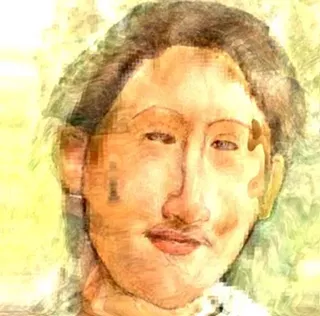After a while, the only images that remained clear in my mind were poor Wendy Lehr whirring an eggbeater and indulging in vacant-eyed, Tourette-like blurtings of the word "manioc." I sincerely hoped that Overmyer wasn't planning to give up his day job writing for St. Elsewhere.
On the Verge seemed like a substantially better play last weekend in the version by Sacred Chicken Productions, a company that shows itself only at widely spaced intervals, when actress Carrie Hill and her friends find a script they adore that nobody else is doing locally. I still can't quite understand why the Sacred Chicken folks, the always smart director Sabian Trout and theater companies across the country love this play so extravagantly, but thanks to this new production, I'm beginning to figure it out.
On the Verge presents to us Mary, Fanny and Alexandra, three Victorian-era American women with enough time and money on their hands to have become seasoned explorers. They call themselves "polytopians," world travelers, and between them--until now, they've always preferred solo expeditions--they've covered most of the world's jungles, mountains and glaciers. And now, in 1888, they arrive on the shores of Terra Incognita, which they determine to be somewhere west of Australia and east of Peru.
It's a land that presents our intrepid explorers with sheer cliffs to scale, dense jungles to penetrate, and strange, unidentifiable artifacts to inspect: the aforementioned eggbeater, an "I Like Ike" button, a newspaper clipping about some president named Richard Nixon.
And the rare air of Terra Incognita is somehow introducing arcane words and curious concepts to the minds of our sister sojourners. They are "osmosing" the future.
You see, in this play, which is subtitled The Geography of Yearning, the explorers are venturing into the 20th century, unsure that they should entirely and permanently abandon the world they know, yet intrigued by the potential ahead.
These women understand their world, and the new lands they explore, through language more than through any other way of knowing. "English is the vehicle, and its engine is empire," one of them declares none too subtly. Their gradual breakdown of communication demonstrates more than anything else that they've become lost in the world, disoriented as they confront the future.
Alas, what could have been an excellent, witty feminist parable about women's awakening keeps detouring into trivialities ("I Like Ike") and avoiding the rockier road of real issues. When the explorers reach 1955, it's amusing that both the most conservative and the most progressive members of the group feel oddly comfortable there, but Overmyer is so distracted by his free-association style of writing that he can't hunker down and develop that idea, even though he spends most of the second act dancing around it.
Two decades ago, that ATC production couldn't break through Overmyer's artifice; in keeping with the text, the acting was overstylized, distancing the characters from the audience. This is not a problem in the Sacred Chicken production. The three explorers are carefully delineated and sympathetic.
As they venture into the future, they little by little glimpse how their roles as women might change; these half-understood glimmerings intrigue the confident Mary, disturb the hidebound Fanny and excite the restless young Alexandra. Under director Trout's careful guidance, the characters are nicely individualized by, respectively, Carlisle Ellis, Toni Press-Coffman and Hill.
Ellis is her usual indomitable self as Mary, always ready to press on without entirely turning her back on the time and place from which she has emerged. Press-Coffman is both prim and a little worn out as Fanny, the group's conservative, the sort of adventurer who bores people with tales of exotic banquets at the explorers' club, and whose idea of "civilizing" the natives is teaching them croquet. Hill is girlish and enthusiastic as Alex, and manages to make the character's stream-of-consciousness linguistic excursions seem endearingly dotty rather than smug and writerly. Even she, though, can't quite make the malapropisms Overmyer imposes on her seem convincing.
Art Almquist brings good cheer to an assortment of male cameo characters, although it's hard to tell some of them apart. The cannibal who proves you are what you eat; the beatnik bridge troll and the giddy gas station attendant do stand out from the crowd.
The story plays out on a stage that's bare save for curtains at the sides and along the back, which fulfill their traditional theatrical function of hiding things in the wings and backstage, while simultaneously evoking both the heavily draped Victorian era and a jungle's dense growth. Norm Testa designed the set and lighting, which work just fine except for one moment when a bunch of artifacts descending from the flyspace can hardly be made out behind the curtains. Figuring out what they are is like trying to find the wit and poetry that's too often obscured by Overmyer's self-conscious wordplay.







